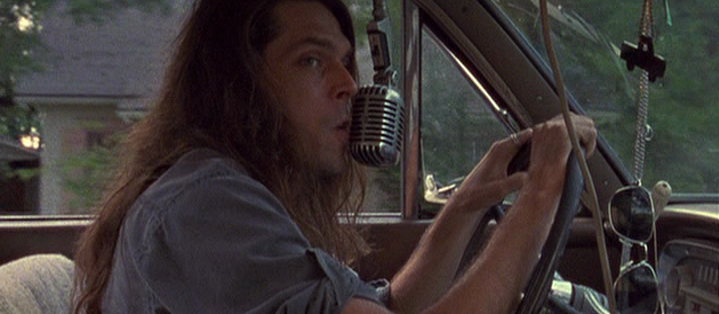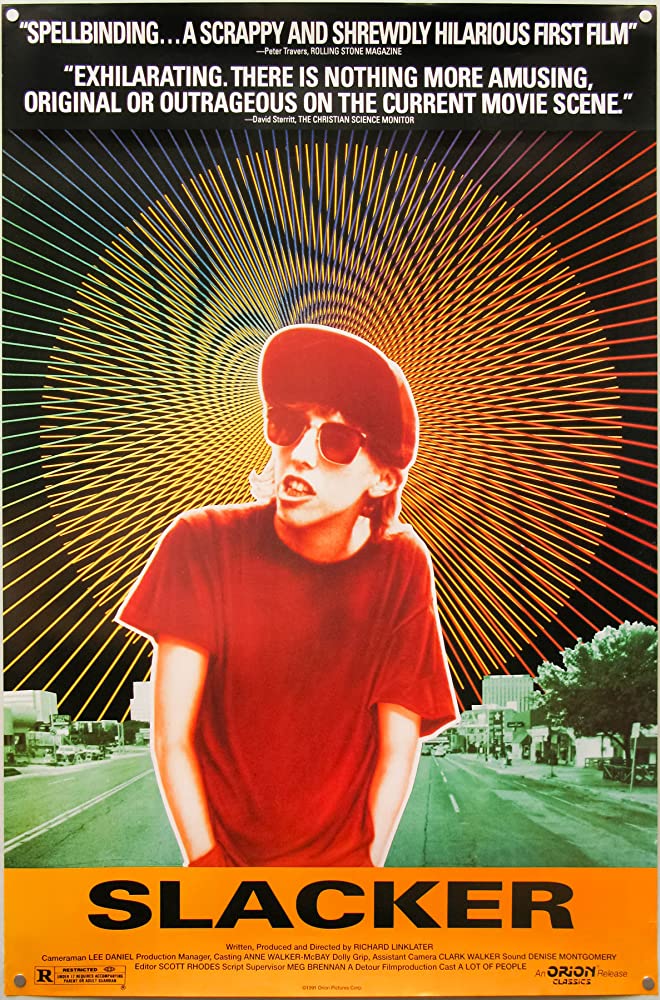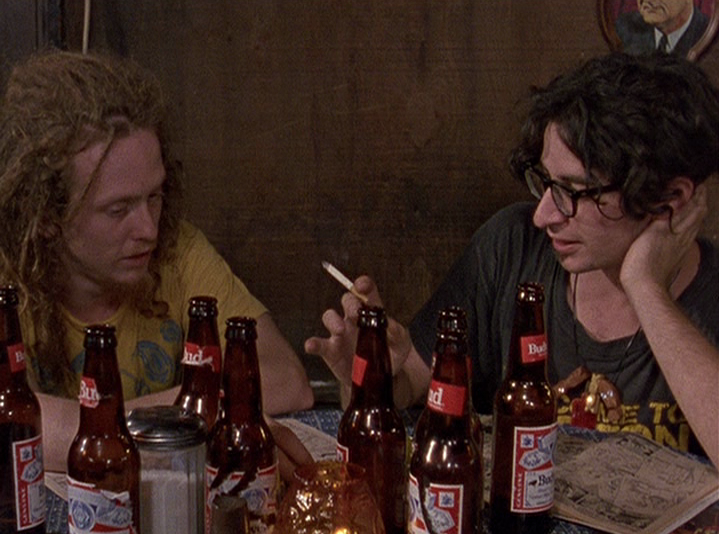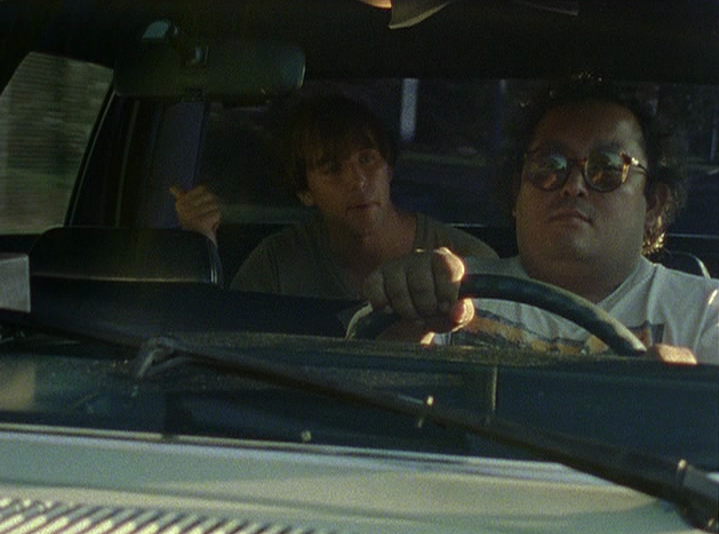

“To me, my thing is, a video image is much more powerful and useful than an actual event.”
Richard Linklater’s Slacker is like a compilation of scenes that are usually peppered throughout dialogue-heavy indie films to add flavor. Like the Big Kahuna Burger, metric system, and mayonnaise on fries from Pulp Fiction, or most of what Walter says in The Big Lebowski, the film is an unending series of interesting threads of conversation. Most of the characters are bohemian twenty-somethings who are, well, slackers. What’s unique here is that Linklater wants us to see these people, to invade their lives for a moment, but to move on and find a new interesting vignette instead of following any steady plot or uncovering the details of any of their lives. Like surrealist Luis Buñuel’s The Phantom Liberty, Linklater will let us stay with a character for only a scene, before moving on with someone that the first character happened to cross paths with. Its charm is hard to pinpoint, but it has a strange appeal that makes it engaging even though it lacks many conventional film elements.
As Linklater explains, he wanted to capture a certain subsection of the local culture milling about the University of Texas. “West Campus is where all the students who either quit or have already graduated but haven’t moved on to what they’re gonna do are hanging out. Their education continues, but along unsupervised paths. The quest for knowledge is still there, but there’s no action. It’s all ideas and words but nothing happens.”

The film opens with a young man (Linklater) riding in the back of a cab and launching into a monologue aimed at the cab driver about fractured realities and dreams. His theory is that anytime you think of some potential action, a separate reality splits off where you did take that course of action. As he collects his bags and gets out of the cab, he witnesses a hit and run, and checks on the victim lying bloodied in the street. The camera slowly moves around the block until we see the same vehicle that had committed the crime come to a stop and park. A man gets out of the vehicle, and we follow him into his apartment, where he has a shrine, a television, and some Mister Potatohead toys. He is arrested, and as he is brought out of the house, we find ourselves following some bystanders who saw the arrest happen.
It goes on like this for the entire runtime of the film, with none of the characters receiving an extended treatment. I honestly thought it would be gimmicky and annoying, but it actually was a welcome change of pace from polished Hollywood films that fit together so mathematically. In a standard film, almost all of the scenes in Slacker would be moments that happen offscreen. They would be considered extraneous, and would be cut in order to have a clearer plotline. But here there is no plot, so these moments are the selling point. Linklater often chooses to present uncut long takes which allow his ensemble cast to develop into a sort of rhythm, and keeps the viewer engaged in their act of voyeurism.

The people we glimpse for just a moment are diverse and interesting. There are musicians, salesmen, shop-owners, scriptwriters, and baristas. Butthole Surfers’ drummer Teresa Taylor shows up trying to sell Madonna’s pap smear for cash. Particularly delightful were the conspiracy theorists, spouting off about moon landings, UFOs, the assassination of John F. Kennedy.
“This drug takes away your long term memory, leaves your short term memory – so there you are. Well, you got people who don’t know who they are, where they came from. But you tell them something, and they do it. They can follow instructions. Perfect employees.”
Without a story, our focus is drawn instead to the small details. Linklater wants us to listen, rather than to show us or tell us anything. I don’t really know if the film is meant to evoke any particular feeling, or if it was intended merely as a hundred “slice of life” strips stitched into a feature. Whatever the intent, it works, and does so way outside of a conventional film structure.
After his debut, It’s Impossible to Learn to Plow by Reading Books, which is basically an experiment that allowed the director to teach himself how to use his equipment, Linklater’s camerawork is much more assured, and his second experiment is well thought out and pieced together. There are some scenes that fall flat, but the general murmur of the aimless college town residents is incredibly interesting, and it is easy to get through because you know the few dud scenes will be over and completely forgotten shortly.
The film helped popularly define the generation that took up the call of the hippies and the beatniks; the disaffected youth who found themselves mired by meaninglessness and a lack of beliefs. Though it appears to be randomly organized, the film is actually based on notes that Linklater jotted down over the course of five years; snippets of conversation that he had heard around the area throughout his time there. Similar to Steven Soderbergh, Linklater would go on to have a remarkable career alternating between low budget indies and mainstream studio films. Slacker is a neat time capsule and an delicious experimental debut for one of American’s leading independent cinematic voices.